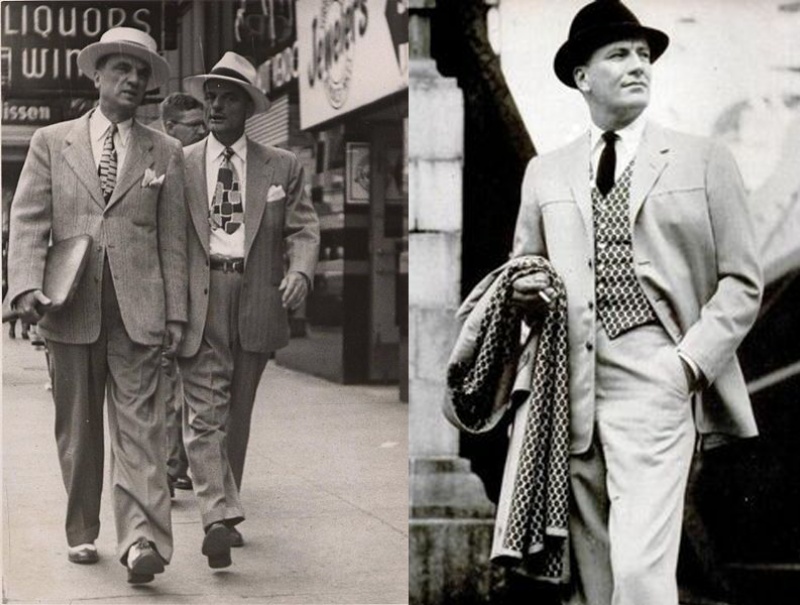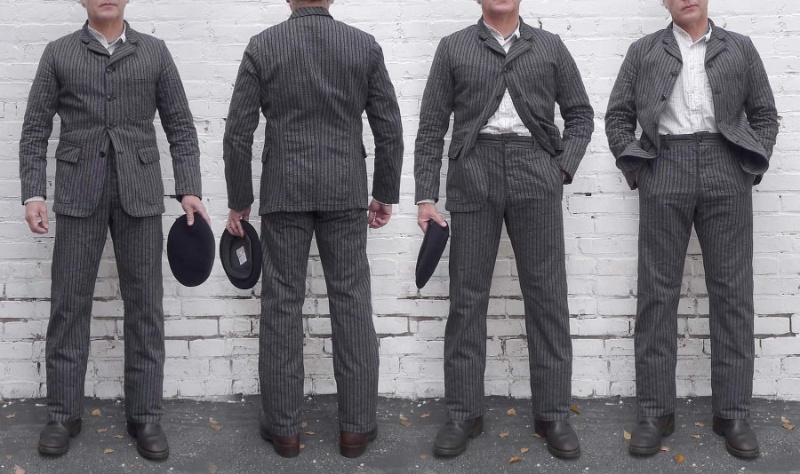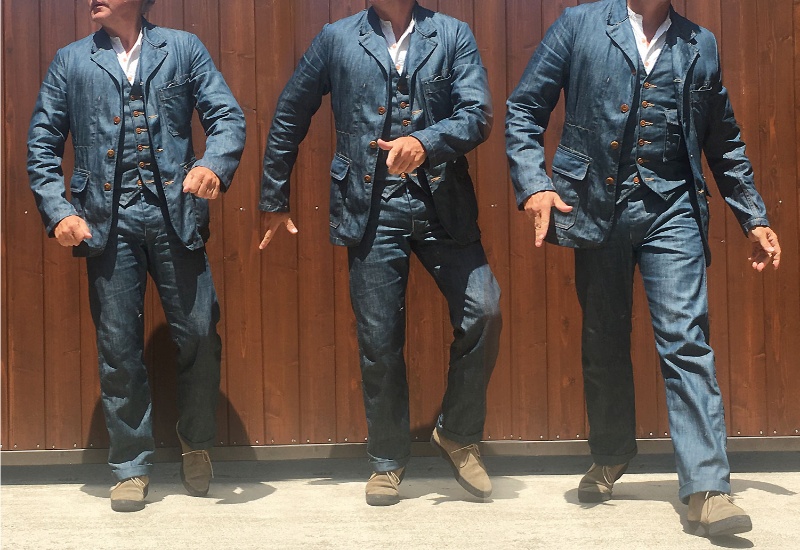The continental suit is one of those rare gems in menswear that effortlessly bridges classic tailoring with contemporary sophistication. I’ve found this type of suit to be a perfect choice for men who value understated elegance with a modern flair. In this article, we’ll uncover what defines the continental suit, its key characteristics, and why it continues to hold a special place in the wardrobes of discerning gentlemen around the world.
1. What is a continental suit?
The continental suit is a style of men’s suit that originated in continental Europe, blending sleek tailoring with a modern, body-hugging silhouette. Unlike other traditional suits, the continental suit focuses on clean lines, a shorter jacket, and a lightly padded shoulder, creating a sharp yet natural look.
What sets the continental suit apart in the world of menswear is its perfect balance of formality and flair. It offers a refined elegance that feels contemporary but still respects classic tailoring principles, making it a favorite for those who want to appear confident and stylish without appearing overly rigid.
Whether worn in a business setting or at a stylish social event, the continental suit provides a versatile, sophisticated option that flatters a wide range of body types and personal tastes.

2. History of the Continental suit
The origins of the continental suit are deeply rooted in European fashion history, with significant influence from both Italian and French tailoring traditions.
Italian suits are renowned for their light construction, minimal padding, and sleek, close-to-the-body fit, while French tailoring adds a touch of refined elegance with precise cuts and subtle sophistication. Together, these elements shaped what we now recognize as the continental suit. This type of suit emphasizes natural shoulder lines, a slightly shorter jacket length, and a tapered waist to enhance the male silhouette.
In contrast, the British suit is famous for its structured, almost military-like build, often featuring heavier canvassing and strong shoulder padding, giving the wearer a more formal and robust appearance. The American suit, on the other hand, traditionally leans towards a looser, boxier fit with minimal shaping, designed for comfort and practicality rather than sharp aesthetics.
The continental suit rose to prominence in the mid-20th century, especially during the 1950s and 1960s, when European style icons popularized slimmer, more tailored silhouettes that broke away from the rigid forms of earlier decades.
Over time, this suit became a symbol of effortless European chic, adapting to modern tastes while retaining its core characteristics of lightness, precision, and understated elegance.

3. Key characteristics of the Continental suit
Jacket construction
The continental suit stands out for its sleek, precise tailoring, designed to offer both elegance and modernity. One of the most distinctive elements is the jacket construction, which features lightly padded or even unpadded shoulders. This creates a natural, soft shoulder line that drapes smoothly without the stiff, structured look seen in British tailoring.
The jacket length is slightly shorter than that of traditional suits, which subtly shifts the proportions to emphasize a taller, leaner silhouette—an intentional design that reflects European style preferences.

Slimfit cut
Another defining trait is the slim-fit cut, with a strong focus on a tapered waist. This sculpted shape flatters the wearer by following the body’s natural contours, delivering a clean, sharp profile that looks contemporary yet timeless. Lapel styles on a continental suit typically include the classic notch lapel for understated elegance and the peak lapel for a more commanding, formal presence—both of which are staples in European tailoring.
Trouser for Continental suit
The trousers that accompany a continental suit complete the streamlined aesthetic. Cut slim but not skin-tight, they are designed to elongate the legs and maintain fluid movement, balancing comfort with a crisp, polished appearance.
Together, these features make the continental suit a versatile and stylish choice, ideal for modern gentlemen seeking a smart, well-fitted ensemble that transitions seamlessly between business and social settings.

4. Why choose a Continental suit?
The continental suit is a top choice for anyone looking to achieve a versatile, youthful look without sacrificing sophistication. One of its greatest advantages is its ability to adapt to a wide range of occasions.
Whether you’re attending a business meeting, a semi-formal event, or a casual evening out, this suit provides the perfect balance between formality and relaxed elegance. The slim, tailored fit enhances your silhouette, offering a modern appeal that keeps you looking sharp and on-trend without feeling overly rigid or old-fashioned.
Another key reason to choose the continental suit is its ability to maintain a polished, refined appearance without appearing stiff or constricting. The suit’s lighter construction, with its natural shoulder lines and slightly shorter jacket length, ensures that you can move comfortably while still looking effortlessly put-together. This makes it an ideal choice for those who want to look stylish and confident without the formalities of more traditional suit styles.
Finally, the continental suit is perfect for both newcomers to tailoring and seasoned fashion enthusiasts. If you’re just starting to explore the world of suits, its streamlined fit and versatility make it an easy choice for any occasion.
For the more experienced suit wearer, it offers an opportunity to experiment with fabrics, accessories, and fit without straying too far from classic sophistication. Regardless of your experience, the continental suit is sure to elevate your wardrobe and boost your confidence.

5. Best fabrics for a Continental suit
Choosing the right fabric is essential to fully appreciate the craftsmanship and style of a continental suit. Given its origins in warmer European climates and its emphasis on lightness and comfort, certain fabrics complement this suit style better than others.
Lightweight wool is perhaps the most versatile choice, offering breathability, natural stretch, and a crisp drape that holds the suit’s sleek shape. A high-quality wool suit in a super 100s to 130s range provides an ideal balance between softness and durability, making it perfect for year-round wear.
For warmer seasons or more casual settings, linen and cotton fabrics are excellent options. Linen brings a relaxed, airy feel with its natural texture and cooling properties, though it does wrinkle more easily—a trait often embraced for its effortless charm. Cotton suits offer a bit more structure than linen while still keeping the suit light and breathable, ideal for spring and summer occasions where comfort is key.
Blended fabrics, such as wool-silk or wool-polyester mixes, provide added flexibility and practicality. These blends can enhance durability, reduce wrinkling, and sometimes introduce a subtle sheen that elevates the suit’s appearance. Whether you’re prioritizing comfort, a polished look, or low-maintenance care, selecting the right fabric ensures your continental suit performs beautifully in both form and function.
6. How to wear a Continental suit with confidence
Wearing a continental suit is all about channeling effortless European elegance with a modern edge.
For the office or a formal meeting, a dark grey or navy continental suit paired with a crisp white or pale blue dress shirt and a silk tie captures a polished, authoritative look. Opt for a slim tie to complement the streamlined silhouette of the suit, and keep the knot neat—an understated four-in-hand or a refined half-Windsor knot works beautifully in this context.
When dressing down for a smart casual event, you can skip the tie altogether and opt for a well-fitted open-collar shirt in a light color or subtle pattern. This brings out the relaxed sophistication that the continental suit is known for, especially when paired with suede loafers or minimalist leather sneakers for a modern twist.
Accessories play a key role in elevating your overall appearance. A classic pair of leather Oxford or Derby shoes in black or dark brown is a safe bet for formal wear, while monk straps or loafers add a bit more flair.
Don’t forget subtle details like a pocket square—folded simply to add just a touch of texture—and a sleek dress watch that keeps the look clean and uncluttered. With the continental suit, less is often more; the suit’s precise cut and elegant lines should remain the star of your ensemble.
In summary, the continental suit stands as a refined symbol of modern elegance, merging the best of European tailoring with a contemporary sensibility. Its clean lines, closer fit, and subtle sophistication make it a versatile choice for anyone looking to elevate their style without veering into excess. Whether you’re investing in your first high-quality suit or expanding a well-curated collection, the continental suit offers a timeless option that balances tradition and innovation.
Create from my passion about sartorial that I accidently discover when I was searching to upgrade my style, this website is dedicated to providing in-depth knowledge, expert styling tips and the latest trends in men’s tailored fashion. Though sometimes I might sound a little cheesy cuz of all that philosophy book I’ve read 🙂
